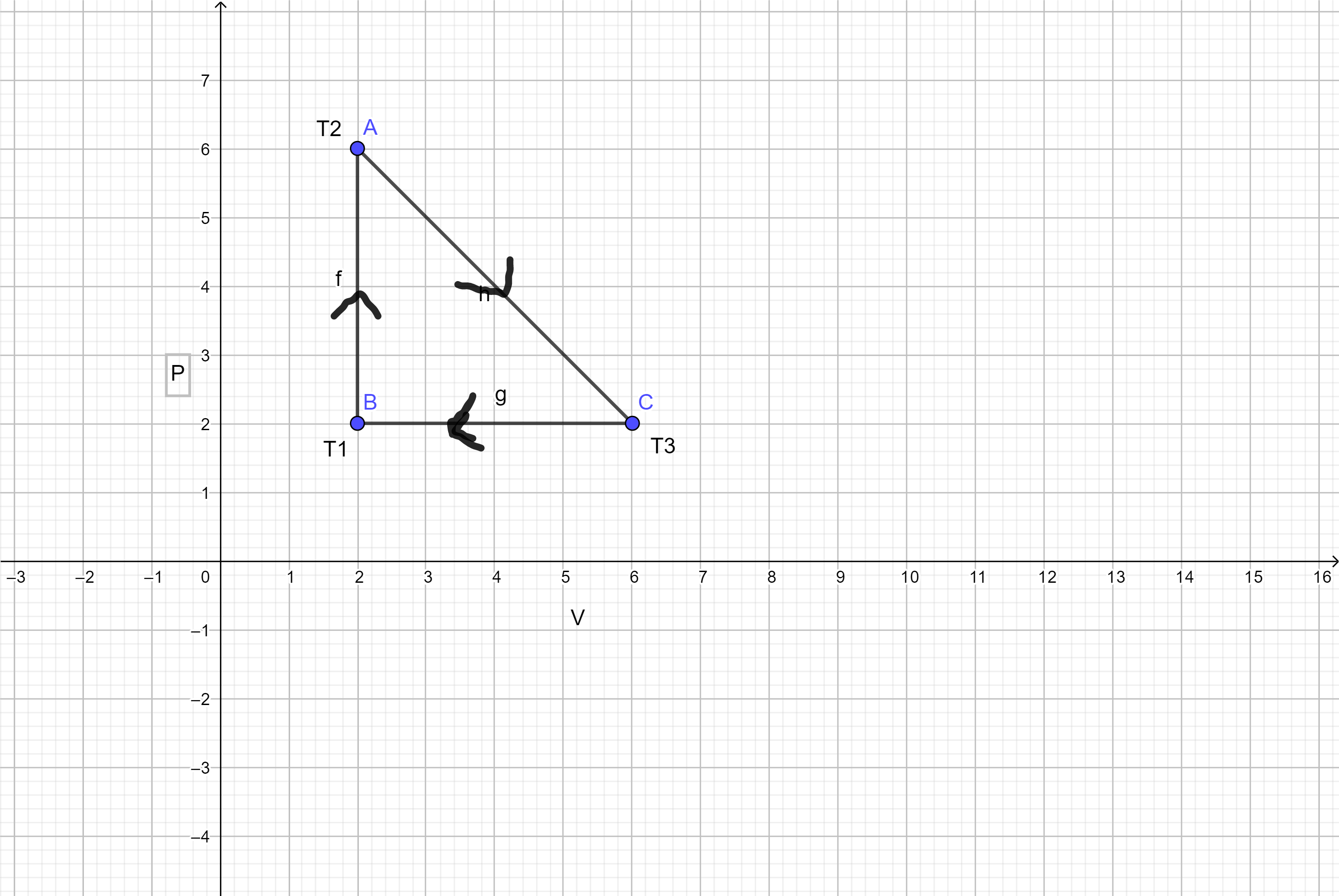From T2 to T3 the process is neither of the four(adiabatic,
isochoric....). How I can determine dU, dQ and dW here
WORK ($W_{A-C}$):
For any process, the work done during the expansion can be calculated from the equation
$$W=\int_{V_{1}}^{V_{2}}P_{ext}(V)dV$$
or in your case
$$W_{A-C}=\int_{V_{A}}^{V_{C}}P(V)dV$$
Where $P_{ext}(V)$ is the external pressure as a function of the volume of the gas. In this example you can determine the pressure as a function of volume graphically applying the general form $y=mx+b$.
Since the work done for any process is the area under the process path, in this example the area under the path A-C can be easily determined graphically as the the sum of the area enclosed by all three processes (the area of the triangle), plus the area under the isobaric process C-B. The net positive work done is the area of the triangle alone.
CHANGE IN INTERNAL ENERGY ($\Delta U_{A-C}$):
In the case of ideal gas behavior its change in internal energy is a function of temperature only according to (for 1 mole of gas).
$$\Delta U_{A-C}=c_{V}\Delta T=c_{V}(T_{3}-T_{2})$$
Where $c_{V}$ is the molar specific heat of the gas.
The temperatures $T_3$ and $T_2$ can be determined by applying the ideal gas law to equilibrium states A and C for one mole of gas since you know, from the graph, the pressure and volume at those states.
HEAT ($Q_{A-C})$
Given the calculations of work and change in internal energy, you can determine the heat transferred by applying the first law
$$\Delta U_{A-C}=Q_{A-C}-W_{A-C}$$
Hope this helps.

